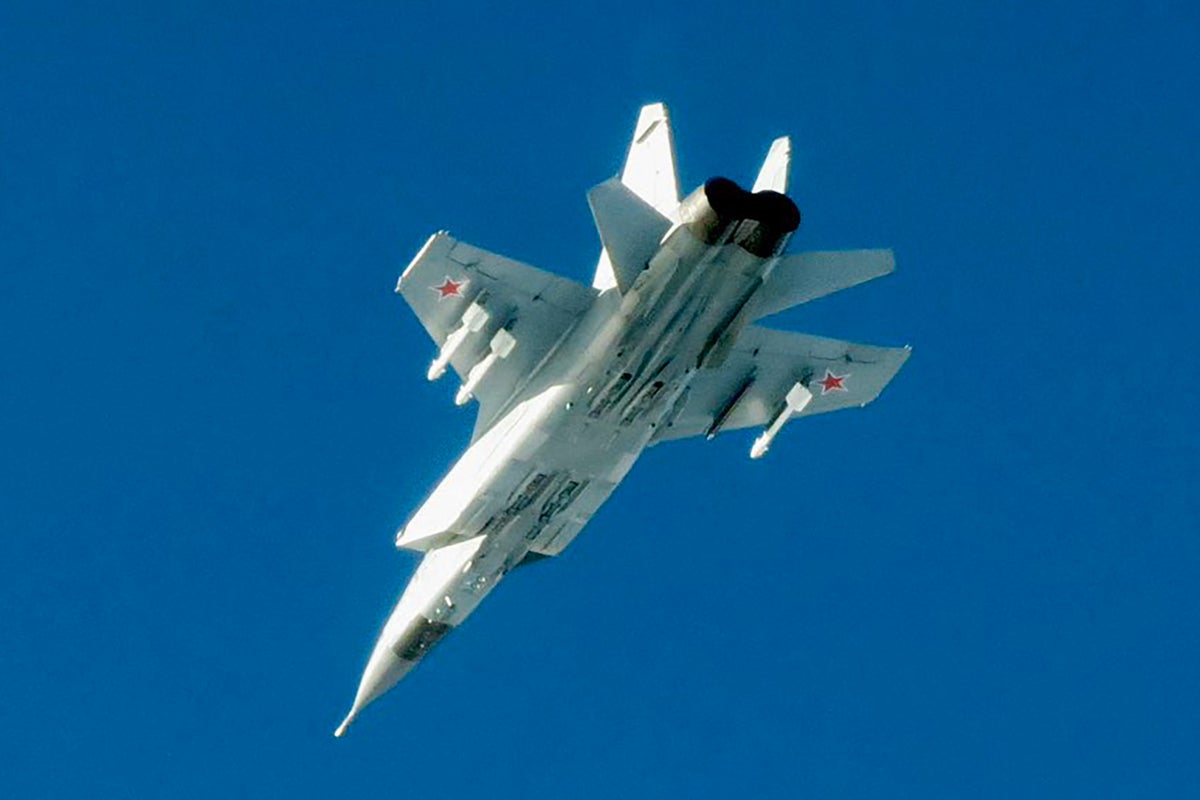Nato has warned Russia that it will use “all necessary military and non-military tools” to defend itself, as debates continue over whether the alliance should shoot down Russian drones and jets that violate its airspace.
The North Atlantic Council, Nato’s principal political decision-making body, met on Tuesday after Estonia invoked Article 4 of the alliance’s founding treaty, triggering a provision that mandates consultations if a member feels its “territorial integrity, political independence or security” is under threat.
It follows an incident on Friday when three Russian MiG-31 fighter jets violated Estonia’s airspace for 12 minutes before Nato Italian fighter jets escorted them out.
It came after some 20 Russian drones entered Polish airspace on 10 September, prompting Nato jets to shoot some of them down.
“Russia bears full responsibility for these actions, which are escalatory, risk miscalculation and endanger lives. They must stop,” the alliance said in a statement following Tuesday’s meeting.
“Russia should be in no doubt: Nato and allies will employ, in accordance with international law, all necessary military and non-military tools to defend ourselves and deter all threats from all directions.”
Could Nato shoot down Russian planes?
US president Donald Trump expressed his approval of a more robust response to airspace violations. “Yes I do,” he said when asked by reporters on Tuesday whether Nato countries should shoot down Russian jets if they enter Nato skies.
It followed comments by the Czech president Petr Pavel, who told local media on Saturday that Nato “must respond appropriately, including possibly shooting down Russian aircraft”.
Marko Mihkelson, head of Estonia’s parliamentary foreign affairs committee, suggested following in Turkey’s footsteps. In 2015, Ankara shot down a Russian Su-24 bomber that entered its airspace along the Syrian border for 17 seconds after being warned repeatedly to change course.
“17 seconds vs. 12 minutes. Next time, we’re doing that — if you know what I mean,” Mr Mihkelson posted on X (Twitter).
It’s not quite as simple as that, according to former Nato and Ministry of Defence official Nicholas Williams, who is currently a senior associate fellow of the European Leadership Network.
While it is down to each of Nato’s 32 member states to decide how to defend its territory – as Turkey did – when it comes to the alliance’s collective response, it would depend on the rules of engagement of the mission. And when it comes to the alliance’s eastern flank and the Baltic air policing mission, those rules, while classified, are “embedded in a reluctance to escalate without good reason”, said Mr Williams.
“[Nato] air policing has been going on since 1961, its roots are very deep in the Cold War, [when] you had to be alert to possible violations and hostile activity,” he told The Independent.
“But in the Cold War there was a deep instinct and procedures against escalation, because escalation would have meant catastrophe and even nuclear exchanges.
“So air policing derives its roots from the idea that we had to be alert in Nato to any violations, to monitor and report through superior authorities in terms of whether force was necessary… but its primary function is to monitor and react to violations and escort the offending aircraft out of the territory, it’s not to shoot it down.”
In order to down Russian aircraft in its airspace, Nato collectively would have to turn the mission into an operation and change its rules of engagement.
“That would be a really serious escalatory move. Some countries would say ‘No, our aircraft and our pilots will not automatically shoot it down, we need political approval first,’” added Mr Williams. “It’s not easy and it would turn a Nato air policing defensive activity into an operation which possibly will lead to confrontation and escalation without political control.”
How does Nato’s air policing work?
Nato members with fighter jets help to ensure the integrity of the airspace of the countries that lack air combat capabilities. In the case of Estonia, Latvia and Lithuania, which are all on or near Russia’s border, Nato has been protecting their skies since 2004, when the Baltic states joined the alliance.
Nato members that have the required capabilities voluntarily contribute to the Baltic air policing mission, which rotates every four months. Italy is currently in charge of that mission.
The Supreme Allied Commander Europe (SACEUR) is responsible for the conduct of the Nato air policing mission. This role is always held by a US general, appointed by the US president and confirmed by Nato. SACEUR does not act independently and needs approval from Nato’s political leaders to launch missions.
“When a country provides the assets to the air policing mission, they do it under a set of rules of engagement… so I imagine that Italians and everyone else would’ve devoted their assets on the understanding that the mission was to monitor and alert and to escort the offending aircraft out of the territory,” said Mr Williams.
What about drones?
Drones are, theoretically, easier to shoot down than jets, said Mr Williams.
On the Polish incident of 10 September, when three or four Russian drones out of 19 were shot down after crossing into Polish airspace, Mr Williams noted these were “unmanned, they were probably decoys, and there was no controversy or possible escalatory implications of shooting them down”.

